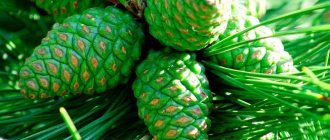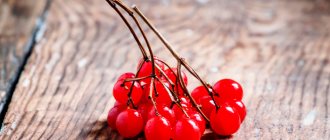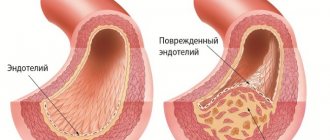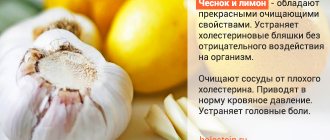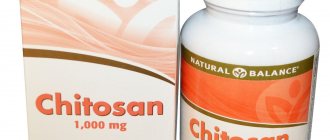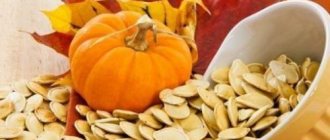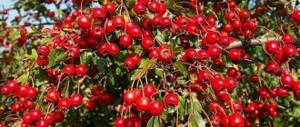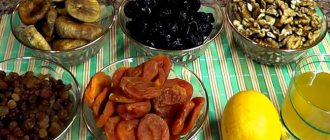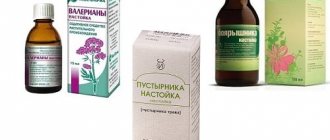The healing effect of clover for lowering cholesterol
Red clover is a small herbaceous plant, 15 to 55 cm high, with a branched stem and red-pink inflorescence. It grows in large quantities in the fields and meadows of central Russia. Due to the red color of the plant head, it is also called red clover.
The plant has many medicinal properties, including lowering cholesterol levels. The effect of blood purification and normalization of lipid metabolism is achieved due to the content in clover:
- unsaturated fats;
- tannins;
- folic acid;
- ascorbic acid;
- thiamine;
- vitamins
Biologically active substances are absorbed into the blood and have a therapeutic effect. In particular, they remove cholesterol molecules from the blood and stabilize the fat balance. The healing substances of this plant not only inhibit the atherosclerotic process, but also contribute to the destruction of cholesterol plaques already existing on the vascular wall.
Cholesterol is an organic compound that takes part in the production of vitamin D, bile acids and some hormones. But this is about healthy cholesterol. The human body contains and produces low-density lipoproteins - “bad” cholesterol.
Foods that lower blood cholesterol
Its excess causes blockage of blood vessels. Herbal medicine is additionally used to normalize and reduce lipoprotein levels.
Remedies based on this plant are especially effective at the beginning of the development of the disease, when lipid formations are not yet solid.
The plaques gradually calcify and harden, and then it is impossible to act on them with anything. In this regard, the use of clover-based products at the beginning of the development of the atherosclerotic process greatly facilitates the dissolution and removal of cholesterol formations.
Strengthening the vascular wall occurs due to the tanning properties of clover and its high content of flavonoids. The walls of blood vessels become elastic, the degree of permeability of small capillaries decreases. Folic acid and vitamins stimulate the immune and circulatory systems.
What is the chemical composition?
The unpretentiousness of clover has not reduced the usefulness of its properties and the richness of its composition. The leaves and stems contain many oily components (essential and fatty origin), glycosides, and organic acids, including salicylic, n-coumaric, and ketoglutaric acids.
Availability confirmed:
- isoflavones (so-called phytoestrogens - substances similar to human estrogens);
- phytosterols (substances similar in molecular structure to cholesterol);
- resins;
- rich set of vitamins.
Valuable biological substances such as protein, carotene, and amino acids in a free state were found in clover. There is fiber, as well as calcium and phosphorus salts. More than 40% of the specific gravity is accounted for by nitrogen-free extractives.
Any part of the plant is useful. The experience of traditional medicine confirms this. It is recommended to use medications based on it for diseases of infectious, allergic, oncological nature, metabolic disorders, endocrine disruptions, and also as a preventive measure for vascular atherosclerosis. The prepared products strengthen the body, normalize the activity of its organs and systems, help cope with stress and overcome a decrease in the immunological response.
How to prepare raw materials for medicinal purposes
To get the maximum effect from red clover to get rid of atherosclerosis, it is important to properly collect and prepare the herb for medicinal use. Ready-made dry raw materials are available in pharmacies, but you can prepare the herb yourself. It is recommended to collect red clover when it is actively blooming.
This time falls during the summer months. It is then that the content of useful substances of the medicinal plant is greatest. All parts of the plant are used for medicinal purposes: flowers, leaves and stem. It is advisable to conduct the collection in the afternoon.
After collection, the raw materials are cleared of debris. Then spread in an even thin layer on a clean surface to dry. For these purposes, you can use a sheet of cardboard. You can dry the grass under a canopy; an attic is also suitable.
It is not advisable for the grass to be exposed to direct sunlight. If the plant is dried indoors, it must be ventilated frequently. It is important to ensure that the raw materials do not dry out. Otherwise, it will crumble and then lose its healing properties.
Upon completion of the drying process, the raw materials are transferred to a container that can be hermetically sealed. A plastic container or glass jar is suitable for this. If you collect and store the plant correctly, its healing properties will last for a whole year.
For medicinal purposes, it is better to use clover flowers.
a brief description of
Trifolium (Latin name for clover) is a perennial plant that has:
- The leaves are trifoliate;
- Red, white or multi-colored moth-type flowers;
- Fruits – beans for one or two seeds;
- A fibrous root system that tends to become woody.
Due to its aroma and structural features of the flower, the plant is very attractive to bees, and therefore belongs to the category of honey plants.
You can find clover everywhere, but open fields, areas brightly lit by sunlight and low neighboring vegetation are more desirable for it.
The best folk remedies with clover against cholesterol
For high cholesterol, use both the dried plant and fresh flowers. It is believed that the latter option is better, since fresh flowers contain more nutrients. But since not everyone has the opportunity to collect clover with their own hands, the use of dried raw materials is allowed.
If there is an increased concentration of cholesterol in the blood, use an alcoholic tincture of clover and a decoction. At the same time, an alcohol tincture can be more effective due to the rapid absorption of biologically active substances contained in clover into the blood.
Clover tincture with vodka for cholesterol is prepared as follows:
- Freshly picked flowers are washed with water and filled into a liter jar.
- Fill the container to the brim with alcohol or vodka and close the lid tightly.
- Store in a dark place for 14 days.
- Shake the jar occasionally.
After the specified time has elapsed, the composition is filtered and it is ready for use. It is recommended to take 1 tbsp. l. pre-diluted in 1/3 glass of water. You need to drink the tincture before meals, about half an hour. The duration of such treatment is 30 days. Afterwards they take a break for 1 week. In general, it is recommended to repeat the course 3 times. To obtain a noticeable effect, you will need to drink the tincture for 4 months.
An anti-cholesterol clover decoction in water is suitable for people who cannot tolerate alcohol. In this form, the medicinal product is stored for much less time. It should be brewed each time before use.
To prepare the decoction, wash the flowers thoroughly and add 3 tsp. pour a glass of boiling water (250 ml). Leave to infuse for 1 hour. Strain and divide into 3 equal doses, i.e. drink 1/3 glass at a time. One glass of decoction is for one day. The duration of such treatment is 2 months, there are no breaks during this time. It is advisable to repeat the course after 1 month.
Clover decoction can also be prepared using a thermos. Pour 2 tbsp into the container of the device. spoons of dry herbs and pour 250 ml of boiling water. It is advisable to make the decoction in the evening and leave it in a thermos overnight and take it the next day. Just as in the previous recipe, the decoction, brewed in a thermos, is taken 3 times a day, half an hour before meals, 1/3 cup.
Medicinal properties
Red clover is an inconspicuous, common plant with an invaluable array of beneficial properties.
Its flowers consist of:
- coumarins;
- phenolic acids;
- polyunsaturated fatty acids;
- salicylic acid;
- essential oils;
- flavonoids;
- tannins.
All these substances are responsible for the healing effect of clover. Flavonoids and phenolic acids have an antagonistic effect on free cholesterol and atherogenic lipids. Polyunsaturated fatty acids in plant juice trap cholesterol particles and prevent their accumulation on the endothelium. Clover also contains many complexes of vitamins and minerals, which enhance its healing effect on the body.
Precautionary measures
Like any medicinal plant, clover has a number of contraindications. Before starting treatment with it, you should consult your doctor. So, home treatment based on red clover for cholesterol is not suitable in the following cases:
- period of pregnancy and breastfeeding;
- blood diseases and blood clotting disorders;
- early postoperative period;
- gastrointestinal diseases;
- malignant neoplasms.
Individual intolerance cannot be ruled out, which manifests itself in the development of allergic reactions such as skin rash and itching.
Traditional medicine recipes using clover are effective in lowering cholesterol levels; for this you will need to complete a full course of treatment. However, if medications have been prescribed, they cannot be replaced with herbal medicine. Drug treatment and the use of alternative medicine prescriptions should be combined and not mutually exclusive.
Clover tincture is more effective than decoction, as it is better absorbed into the blood
Possible contraindications and restrictions
The positive effect on the human body in the treatment of hypercholesterolemia is well known. However, this plant is not always safe, and sometimes its use is categorically not recommended.
Clover composition
Taking medications prepared on the basis of meadow clover is prohibited in case of severe gastrointestinal diseases. Women should limit their consumption of tea or honey with this plant during pregnancy and lactation. This is, rather, not a restriction, but only a precautionary measure, since what is safe for the expectant mother may be harmful to the health of the fetus or infant, and the necessary studies have not been conducted to confirm or refute this.
Any medications containing clover (also medicinal) are used with caution to treat patients who have suffered a heart attack or stroke. In case of poor blood clotting, the use of folk remedies with clover should be previously discussed with a doctor - hematologist or therapist.
Reviews
Evgeniy, 45 years old, Moscow: It’s been almost 3 years since high cholesterol levels were discovered. All this time I took many different pills to reduce it. Moreover, they have side effects and contraindications; they have not produced any lasting effect. I decided, after consulting with my doctor, to drink clover tincture. I've heard rave reviews about this product. I actually felt the effect of it. Cholesterol is steadily decreasing.
Irina, 50 years old, Rostov: During menopause, cholesterol began to increase. They didn’t prescribe pills until they decided to reduce it with a special diet, to which I added clover decoction. I heard from friends that it will help lower cholesterol levels. Since my cholesterol plaques most likely formed quite recently, I am counting on the positive effect of clover decoction.
Sergey, 61 years old: I have long known about the beneficial properties of clover, but I had to use it for myself to lower cholesterol levels, which suddenly became elevated. For now I manage without special medications. But along with the tincture I stick to a healthy diet. I limit fats. There is a result, so I will continue this treatment for another couple of months.
Negative reactions
Side effects from improper or long-term use of clover medications can be divided into mild and severe. In the first case, the following occurs:
- difficulty breathing;
- attacks of shortness of breath;
- headaches;
- skin manifestations of allergies;
- muscle pain;
- nausea.
Common serious side effects include:
Liver damage. Long-term use of red clover can cause serious damage to the liver. This disorder will be accompanied by darkening of urine, pain or heaviness in the right hypochondrium, yellowing of the skin or whites of the eyes (obstructive jaundice).- Vaginal bleeding in women. Clover flowers contain isoflavones, which often lead to hormonal imbalances in the body. Especially if there was a long-term overdose of the drug, or it was used incorrectly. Subsequently, a shift in the menstrual cycle in women occurs, resulting in either vaginal bleeding or premature menstruation.
If side effects occur due to the use of clover decoctions, teas or tinctures, therapy should be stopped and consult a doctor.
Indications for use
Folk remedies and medications made from clover are indicated for the following conditions:
- Hypertonic disease. Red clover increases the tone and elasticity of the vascular wall and prevents the fibrotic transformation of arteries against the background of this disease, and by reducing the number of atherogenic lipids, it reduces the risk of developing myocardial infarction and stroke several times. The use is also justified for symptomatic arterial hypertension, with the exception of nephrogenic ones.
- Inflammatory diseases of the upper respiratory tract. Mucolytic, bronchodilation and antiseptic effects contribute to the rapid removal of sputum, easier breathing and the destruction of bacterial flora. Recovery comes faster.
- Mastopathy and other dishormonal diseases. It has been scientifically proven that the plant extract helps normalize hormonal levels and prevent malignant transformations of benign proliferating cells.
- Mechanical damage and infectious and inflammatory diseases of the skin. Meadow clover increases tissue regeneration and reduces microbial contamination in the wound.
- Gastritis, duodenitis, pancreatitis, cholecystitis in remission.
- Atherosclerosis.
- Venous insufficiency with the formation of edema syndrome.
- Poisoning with poisons, bacterial toxins and degradation products of one’s own cells in case of functional failure of the kidneys, liver and lungs.
- Peripheral angiopathy that developed during the course of diabetes mellitus, hypertension and obliterating thrombophlebitis of the lower extremities.
- Tuberculosis of any localization.
- Systemic allergic reactions.
- Autoimmune vasculitis.
- Menstrual dysfunction such as algomenorrhea and dysmenorrhea.
- Menopausal syndrome.
Before starting treatment, it is recommended to consult with a specialist, as there is a significant list of contraindications. This will avoid a lot of adverse effects.
